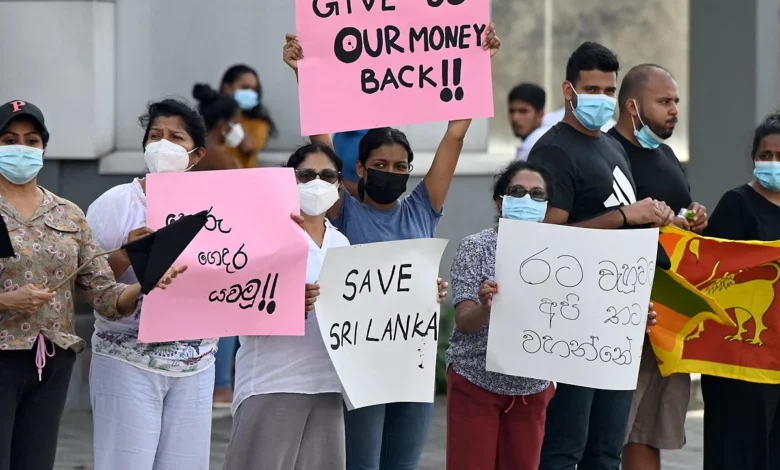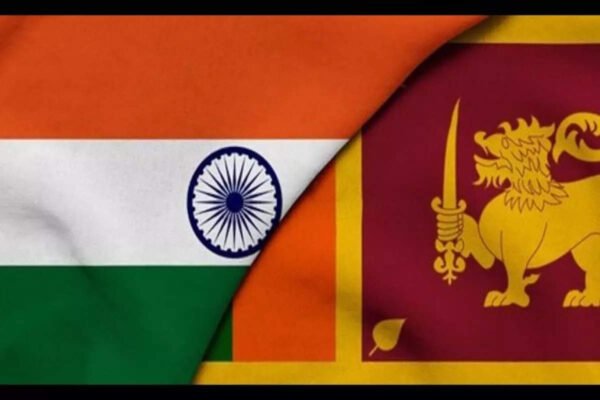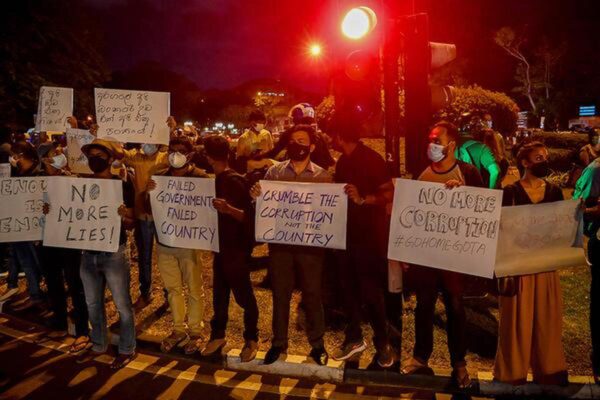Sri Lanka’s Economic Journey To Crisis From Promise To Dystopia: 10 Facts

Sri Lanka’s Economic Journey To Crisis, From Promise To Dystopia: 10 Facts
The current economic crisis in Sri Lanka has its roots in widespread economic mismanagement that began in the 2000s.
With protesters turning to the streets against the political elite, Sri Lanka‘s economic crisis has turned political. But during the 2000s, there was widespread economic mismanagement, which is where the current problem started.
Below are 10 points that provide a history of Sri Lanka’s economic crisis.
Sri Lanka is going through a not only economic crisis, but democratic values are also diminishing as people are frustrated and protesting for their rights.
Even though Sri Lanka relied on imports for even the basics needed by 2009 it had a very horrible situation of having a complicated tariff structure that departs the foreign trade.
This protectionist strategy was meant to shield the home sector from international competition, even after certain relaxations were introduced in later years. Still, it ultimately contributed to a later foreign exchange crisis.
In fact, maintaining trade-unfriendly tariffs was motivated in part by the need to “save foreign exchange.”
Despite this, Sri Lanka’s economy saw growth after the end of the nation’s 26 yrs civil war in 2009. In an endeavour to rebuild after the civil war, the country focused on large infrastructural projects. This ultimately proved to be a double-edged sword because it both momentarily stimulated the economy and started a “debt trap.”
The island nation had annual growth of almost 8% between 2009 and 2012.

The growth narrative then continued, albeit at a slower pace, for a few more years. The World Bank stated that non-structural, short-term, and non-tradable industries like construction, transportation, internal trade, banking, insurance, and real estate were mostly responsible for the increase.
Sri Lanka was hailed as “a development success tale” in a World Bank report from 2015 for its swift economic growth and a significant reduction in poverty.
The government unveiled “Vision 2025” in 2017, with the intention of making Sri Lanka “an affluent country by 2025,” to further secure its economic progress.
One of Sri Lanka’s greatest sources of foreign exchange and job creation during the post-civil war era was tourism.
While Sri Lanka saw an increase of 46.1% in tourist arrivals, the greatest ever, in 2010, the island nation welcomed a record 2.33 million visitors in 2018.
Accordingly, the Rajapaksa administration’s major tax cut in 2019 caused a loss in revenue of approximately $1.4 billion annually. The trade deficit was further exacerbated by restrictive tariffs, as imports vastly outweighed exports.
The trade deficit was $404 million in May 2022.
Sri Lanka’s foreign exchange reserves were depreciated by the trade deficit, the decline in tourism following the Easter Bombings and the coronavirus outbreak, and declining remittances. Particularly hard damaged was the tourist industry, which only saw 1.94 lakh visitors in 2021.
From $4.4 billion in 2018 to only $633 million in 2021, tourism-related revenue fell. Another source of foreign currency, worker remittances, fell to $5.49 billion in 2021, the lowest amount since 2012.
The agriculture industry suffered a setback after the 2021 decision to adopt organic farming and ban chemical fertilizers. Although the government cited public health as the reason for the decision, many believe it was made to conserve foreign exchange because chemical fertilizers are a significant import good.
The government announced an emergency last year as a result of the move being held responsible for the decline in harvests and ensuing food crisis.
May 2022 saw a $50 million low in Sri Lanka’s usable foreign exchange reserves due to rising external debt. In the upcoming six months, Sri Lanka wants at least $5 billion for basic supplies.
Due to limited stocks of essentials, items like fuel are in short supply. Inflation has, however, increased dramatically
Food prices rise from 57.4 percent in May up to 80 percent in June 2022, while overall inflation rose from 39.1 percent in May to over 50 percent in June.
Sri Lanka’s capacity to pay down its more than $51 billion in external debt has been impeded by declining foreign exchange reserves and an overabundance of the US dollar.
The Island country had its first-ever $7 billion debt repayment default in May of this year. According to a report by the European Parliament, Japan, India, Korea, Germany, and France each owned debt totalling 4.4% of Sri Lanka‘s GDP. Sri Lanka’s debt owned by China, which has come under fire for its “debt trap” diplomacy, was equivalent to 6.9% of the country’s GDP.
How India is dealing with the Sri Lankan condition

The island nation appears to be in the worst possible situation: record-high inflation, power outages, a shortage of necessities such as fuel, food, and medicine, up to $50 billion in debt, and $2 billion in foreign exchange reserves.
India has helped Sri Lanka in many ways it could to stabilize its neighbor country but the debt of the country is so huge that it has to take financial help from many other countries to revive its economy.
But why is this crisis bad news for India? How will India prepare for the effects?
The biggest economic crisis in decades has caused a political crisis in Sri Lanka, as President Gotabaya Rajapaksa departed the nation and arrived in the Maldives on the day he was set to step down. Markets are closed, there is an emergency, inflation is at an all-time high, protests are escalating, and the protesters are still defiant.
The Sri Lankans seem to have no way out without help from outside. India granted a credit line to Sri Lanka, supplying 44,000 MT of urgently needed urea as well as other necessary supplies such as fuel, food, and medicines, while China abandoned the island nation.
However, the problem doesn’t appear to be finding a resolution, which is worrying not just the locals but also India.
Colombo Port
The impact of the economic crisis in Sri Lanka on the Indian economy is felt most acutely in the Colombo port. In terms of strategic importance, Colombo is one of India’s most significant ports. It handles more than 30% of the country’s container traffic and 60% of its transhipment.
If the Colombo port’s operations were to be suspended, India would suffer.
As a result, cargo destined for Sri Lanka has accumulated at Indian ports. This will result in increased expenses and congestion problems at Indian ports.
India has begun to develop its own transhipment hub in Kerala to address the situation, but it might already be too late.
Refugee crisis

A humanitarian crisis and a refugee crisis are inevitable outcomes of the ongoing events in Sri Lanka. Even while India has already delivered aid by extending a line of credit for essential supplies like food, gasoline, and life-saving medications, it’s possible that this aid won’t be enough, in which case India may find itself in a morally conflicted situation where it must support its neighbour.
On the other side, history has shown that whenever a political crisis develops in the island nation of Sri Lanka, refugees of the Tamil ethnic group flee across the Palk Strait and the Gulf of Mannar and arrive in India.
If the crisis persists in its current form, a sizable number of people may be forced to leave Sri Lanka in search of safety in India. Such a large-scale refugee influx would be challenging for India to manage socially and economically.
Chinese influence
The growing influence of China and the Chinese Communist Party has been one of the factors in the Sri Lankan economic crisis that most worries India. China is currently Sri Lanka’s top creditor, and it also accounts for the majority of foreign direct investment there.
Sri Lanka failed to benefit sufficiently from Chinese investments in terms of income or employment as a result of falling victim to Chinese debt-trap diplomacy. As a result, the Sri Lankan government was forced to file for bankruptcy and cede control of its significant townships and strategically located ports, including Hambantota Port.
A similar destiny is likely to befall Colombo Port City given the current predicament.
Given the CCP’s power, its effects on global trade, and its effects on security in the South China Sea and the Indo-Pacific, this will be especially disastrous for India.
Investments
In the island country, India has investments in a variety of sectors, including real estate, manufacturing, tourism, hotels, telecommunication, banking, and financial services.
They are already being impacted by Sri Lanka’s present situation, which is predicted to get worse over the next few days.
There is a lot at risk, as seen by the $1.7 billion in FDIS from India to Sri Lanka between 2005 and 2019.
It argues that India should step up and intervene in the present turmoil to protect its neighbors and its interests.
edited and proofread by nikita sharma




